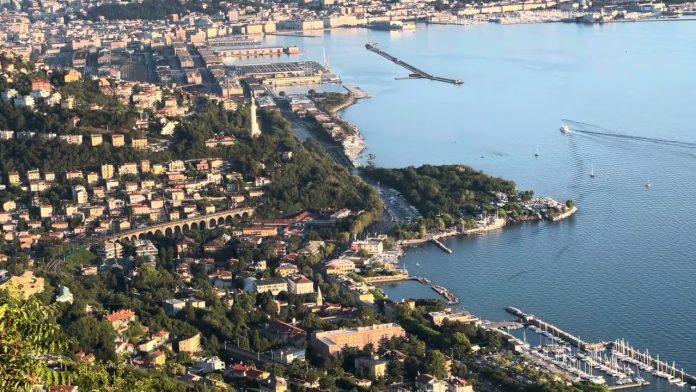by InTrieste
From November 27 to December 1, the Civic Museum of Natural History in Trieste will host the sixth edition of the Palæomovies Film Fest, an evocative celebration of documentary cinema exploring humanity’s prehistoric past. Curated by archaeologist Roberto Micheli and cultural historian Deborah Arbulla, the festival offers audiences a rare chance to travel through time, uncovering the origins of human culture, music, and society.
At a press conference held Friday morning, Giorgio Rossi, Trieste’s City Councillor for Culture and Tourism, expressed admiration for the festival’s diverse programming. “The quality of these events astonished me,” he said. “They appeal to audiences of all ages, combining scholarly insight with passionate storytelling. Congratulations to the team behind this remarkable project.”
Rossi also highlighted the significance of Trieste’s Civic Museum of Natural History as it prepares for its future relocation to the Porto Vecchio district. This transformation, he noted, underscores the museum’s role in promoting cutting-edge cultural initiatives like Palæomovies.
A Window to the Distant Past
This year’s program delves into pivotal themes, from the emergence of modern humans and the role of women in Paleolithic societies to ancient burial practices and life in Alpine stilt-house villages. Highlights include Italian premieres of two highly anticipated documentaries:
- Sapiens, et la musique fut (Sapiens: And There Was Music), a French production that traces the origins of human music, beginning with a 40,000-year-old bone flute.
- They Called Her Jamila – The Secrets of Stone Age Ba’ja, which explores a groundbreaking Neolithic excavation in Jordan, uncovering the burial of an eight-year-old girl adorned with an intricate necklace.
Also featured are Italian productions like Hema: A Story of Castellieri, a docu-fiction set during the Iron Age, and Antiche tracce: La vita in palafitta (Ancient Traces: Life on Stilts), a virtual reality experience that reconstructs life in Europe’s earliest agricultural settlements.
Bridging the Present and the Prehistoric
One of the festival’s unique strengths is its ability to connect modern audiences with distant eras through immersive storytelling and expert-led discussions. The program includes workshops, guided tours, and family-friendly activities. Special attention will also be given to castellieri—ancient fortified hilltop settlements unique to the Carso plateau surrounding Trieste.
Roberto Micheli emphasized the interdisciplinary nature of Palæomovies, which brings together experts from archaeology, anthropology, and the arts. “This festival is more than a showcase of films,” he explained. “It’s an opportunity to communicate the latest research and discoveries in an accessible way, fostering curiosity about the roots of human diversity.”
Global Collaboration, Local Impact
Organized in partnership with the Municipality of Trieste, Italy’s Archaeology and Fine Arts Authority for Friuli Venezia Giulia, and the Prehistory and Protohistory Society of the region, the festival reflects both local heritage and international scholarship. Its broad support, including funding from the Friuli Venezia Giulia Regional Government, ensures a dynamic program enriched by scientific insight.
“The extraordinary preservation of prehistoric sites across Europe offers invaluable insights into early human life,” said Pierre Corboud, an archaeologist presenting his film on Alpine stilt-house settlements.
As Trieste continues to position itself as a cultural hub bridging past and future, the Palæomovies Film Fest exemplifies the city’s commitment to blending education and entertainment, drawing visitors from across Italy and beyond.
For those ready to dive into the mysteries of humanity’s origins, the festival promises an unforgettable journey through time.





























